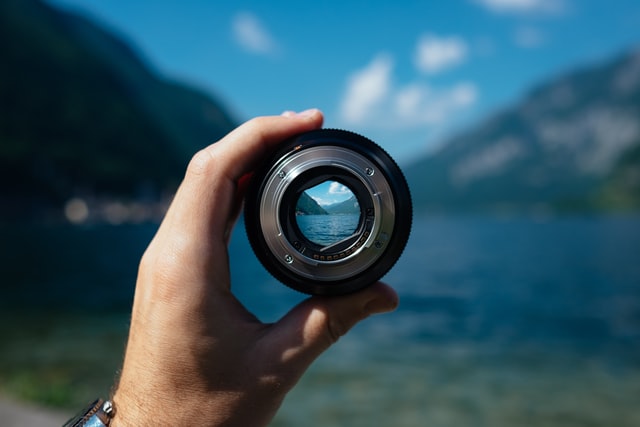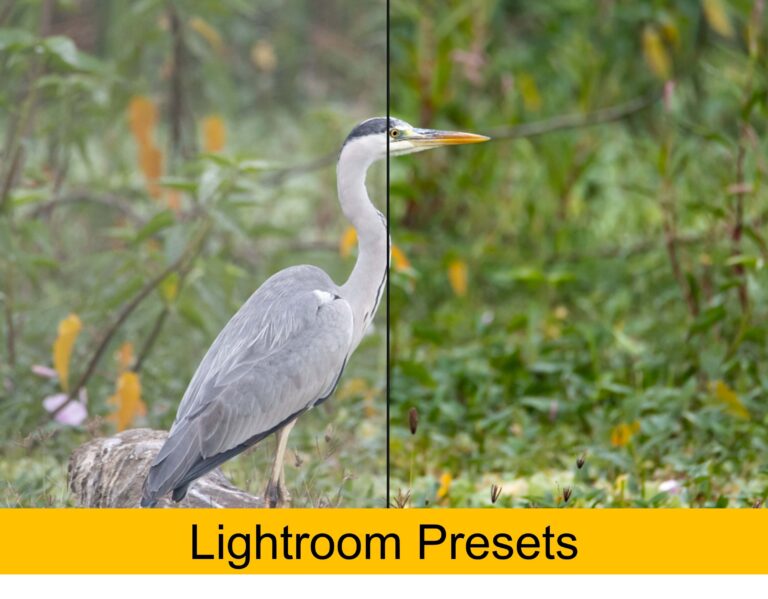There are some debates in photography world which keep coming back to front again and again. Prime vs zoom lens is one such debate going on for years.
Traditionally prime lenses dominated the photography market and for many years they were the only choice available. In recent years, zoom lenses have been extensively used by many photographers as the more flexible and versatile choice.
The gap between zoom and prime lenses has gone down significantly. Most DSLR cameras are also bundled with a cheap kit zoom lens and most modern DSLR and mirrorless cameras can produce high quality images in varying conditions even with these cheap kit lenses.
Both canon and Nikon have come up with many state of the art zoom lenses and they keep improving these lenses every year. Third party lens manufacturers such as Sigma and Tamron have also been producing some stunning zoom lenses these days.
Even with all these improvements zoom lenses still have some ground to cover when it comes to image quality and minimum aperture values that can be achieved by prime lenses. Most professional photographers still bet their life on a prime lens than on a zoom lens !
In this post we will take a detailed look at all aspects of this debate Which lens is better ? Prime or Zoom lens ?
What is a prime lens
Lenses are available in a range of focal lengths. The focal length determines how much of a scene is captured by the lens. It also determines more subtle factors, such as the depth of field available at each particular aperture.
The focal length of a lens is the measurement in millimeters of the distance from the optical
center of the lens to the focal plane when the lens is focused on infinity.
A prime lens is a lens that has a fixed focal length. Also it is also called a fixed lens. This means that focal length of a prime lens cannot be adjusted – it has a fixed angle of view.
If you want to change what’s in your frame then you have to walk closer to your subject or move away from it. This is very good for a beginner photographer as you understand focal length , depth of field , field of view and many other nuances of photography very quickly.
Prime lenses have been the most popular lenses for photography and video as well and for many years the only choice available.
Prime lenses are also considered as fast lenses due to the fact that these lenses have a very large aperture. Fast lenses help to achieve out of focus background and excellent low light capability. These lenses have good minimum aperture F-stop values.
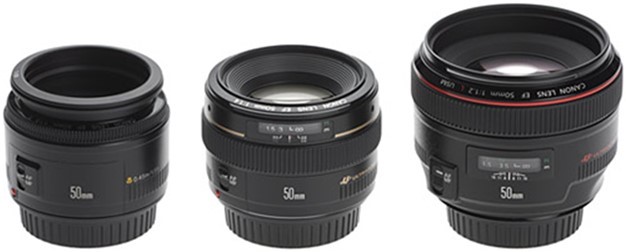
A typical prime lens nomenclature will be like Canon EF 50mm f/1.4 USM. Here 50mm is the focal length of the lens and F1.4 is the minimum aperture for the lens. USM is ultrasonic motor which is a proprietary focusing arrangement from Canon.
Prime lenses come in wide variety of focal lengths. Typical focal lengths are 35 mm ,50 mm ,85 mm, 100mm and so on up-to 800 mm. They also come in large price range with a sub 100$ 50 mm F1.8 lenses to large telephoto lenses such as Canon 600mm F4 can cost you 13,000$.
What is a zoom lens
A zoom lens as against a prime lens has an adjustable focal length. It offers a useful range of focal length range for photographer in a single lens. This means that the photographer has an opportunity to reframe i.e zoom in or zoom out while staying at same physical location.
This gives a lot of flexibility to the user especially when you do not have control over your own location and getting close or away from subject is not possible.
Zoom lenses have two main specifications.
- Focal length range : This specifies the focal range of the lens. For example a 70 – 200 mm lens has a minimum focal length range of 70 mm and maximum focal length range of 200mm. Please keep in mind that this specification is generally for a full frame camera and for a crop sensor the range will have a multiplication factor of say 1.4 – 1.7. This means for a canon APS-C camera with crop factor of 1.6 the same 70-200 zoom lens will become 112-320 mm. Typical focal length ranges are 10 -22 mm, 16-35mm, 24-105mm , 70 – 200 mm , 100 – 400 mm.
- Aperture range : This specifies the minimum aperture range for the given focal length range. For example a typical kit lens specification is 18 – 55mm F3.5-5.6. This means that the minimum aperture at 18mm is F3.5 and minimum aperture at 55mm focal length is F5.6. Such lenses are also known as variable aperture zoom lens. While there are some lenses such as 70-200mm F2.8 which has a constant aperture through out the zoom range or focal length range. This is known as constant aperture zoom lens.
Typical zoom lenses have a zoom range of 3:1 or 4:1. At this zoom range it is possible to maintain the image quality at a decent level. In some more adventurous zoom lenses the zoom range can be 10 : 1 , in this case however it is very difficult to achieve the required image quality through out the zoom range. 18-200 and 18-300 are typical examples of such extreme zoom lenses.
What is a telephoto lens
People mistakenly confuse telephoto lenses and zoom lenses, but they are two different things. Telephoto lenses can be, but do not have to be, a zoom lens. Telephotos are available in several focal lengths, including “medium telephoto”, which is generally between 70-200mm and “super telephoto”, which is longer than 300mm.
They can also be prime or zoom lenses. It doesn’t really matter if the lens zooms; what matters is the focal length. Anything with more than 50 mm focal length is generally a telephoto lens and it can either be a prime or a zoom lens.
Prime lens vs zoom : Pros and cons
Prime and zoom lenses have their own space in the photography world. Different lenses can be used for different application. Below is a comparison of t prime vs zoom lenses on various aspects. This is the general trend and not the absolute truth , there are always exceptions to these pros and cons.
Size and weight
Prime lenses are generally more light and compact compared to their zoom counterparts. Zoom lenses have to have more glass compare to prime and hence tend to be heavier and more bulky.
Zoom lens construction is more complex and needs a lot more parts to do the same job. This is the main reason for zoom lenses to be more bulky and heavy as well.
Prime lenses at very large focal lengths such as 400 mm and more tend to be as big and heavy as a equivalent zoom lens though.
Zoom lenses are small at their minimum focal length but they also extend after zooming in and that tends to increase the size as well.
Cost
There is no comparison here prime lenses are always cheaper than the zoom lenses. However you need to have more lenses to cover the same focal length range and that can add to cost if you need a wide range.
A 24-70mm f/2.8 will cost $1900-2300. Even if you cover focal lengths between 24mm and 70mm with fast prime lenses such as 35mm f/1.8, 50mm f/1.8 and 85mm f/1.8, you will still end up paying much less compared to the zoom lens price.
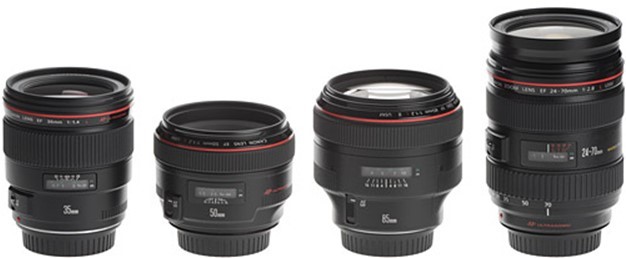
Some of the larger focal length primes lenses are extremely expensive though but htey also have very limited applications and are used mostly by professionals. For average consumer a set of fast prime lenses should be cheaper than a state of the art zoom lens.
Image quality
Few years back this was undoubtedly in favor of prime lenses and in a big way. Prime lenses had hands down significantly better image quality compared to zoom lenses.
However with recent advances in zoom lenses , many zoom lenses provide very good image quality in a significant focal length range.
Prime lenses generally have incredible sharpness and pleasant look to the image due to the soft out of focus background. This is because of the fast nature of the prime lens. Overall defects such as vignette , pin cushion, chromatic aberration , lens flare etc. can be better controlled in a fast prime lens compared to a zoom lens.
Some lenses such as Sigma 18 -35 F1.8 are an exception to this and provide almost prime like image quality throughout the zoom range.
Overall we can still say with confidence that primes still have better image quality than zooms.
Minimum aperture
Prime lenses are fast lenses as they can go to very small F stop numbers which means that they can have very large aperture opening. This fast lens behavior is very good for low light and also gives very good bokeh.
F1.8 aperture is very common for prime lenses and many more expensive lenses go down to F1.4 and F1.2 as well.
Zoom lenses have limitation and are generally are restricted to F2.8 or F4 in most cases.
Focal length
Both prime and zoom lenses are available in wide focal length range. Prime lenses generally start at 24 mm and 35/50/85/100 are most popular nodes for prime lenses. Many extreme wide angle prime lenses are also available and are used for landscape photography.
At higher end telephoto prime lenses such as 300/400 and 600 mm are also very popular amongst bird and wildlife photographers.
Zoom lenses also cover the entre range from extreme wide to extreme telephoto.
First prime lens to buy
Canon or Nikon 50mm F1.8 is the best first fast prime lens to buy. It is extremely cheap and versatile and has been one of the most popular lens in the market for a very long time.
50 mm focal length is also something that relates to human eye and pictures with this lens always appear pleasing to the eye.
Being a prime lens one has to move around to grab the right picture and this helps to learn the photography quickly.
Prime lens vs zoom lens for video
Prime lens is the lens of choice for most professional videographers and film makers. Most Hollywood movies are shot on a set of prime lenses.
Zoom lenses are not widely used in professional video work however can be a good option for travel and street video work or YouTube work.
Zoom lanes can also be a good option for family video shoots or small functions where a little bit more focal length range is required.
Prime lens vs zoom lens for travel
This is one area where zoom lenses have started to dominate the photography market. Most people want to take out their camera and take a quick snap when they are travelling.
With a good zoom lens you can quickly frame the subject as per your need and take a quick snap. You don’t need to fiddle around and find the right prime lens for the purpose. 16-35 mm , 24-70mm , 24-110mm have been extremely popular travel lenses.
That said 35mm F1.8 and 50mm F1.8 prime lenses are also very popular amongst travelers. These are extremely light and very sharp as well.
Overall a good zoom lens will do a better job as an overall travel lens than a prime.
Prime lens vs zoom lens for portrait
Prime lens dominates the scene when it comes to indoor ( and in some cases outdoor as well) portraits 85mm and 100 mm prime lenses are very popular indoor portrait lenses. Since you know in advance and can plan well , prime lenses are always preferred. They give tack sharp images and great out of focus backgrounds as well. Soft light photography uses prime lenses to a great effect.
Prime lenses also allow you to use fast shutter speed as these have wide aperture.
One zoom lens that is also very popular for portrait indoor or outdoor candid ones is 70-200 zoom lens. 70-200 F2.8 is extensively used as portrait les and does a great job.

Prime lens vs zoom lens for landscape
Zoom lenses are popular amongst landscape photographers. 16-35 , 24-110 and 70-200 are very popular landscape lenses . For wide angle landscapes people use prime lenses such as a 14 F2.8.
Landscape photographers generally plan their shoot in advance and hence can carry multiple lenses. So prime vs zoom is not really a question that they face!
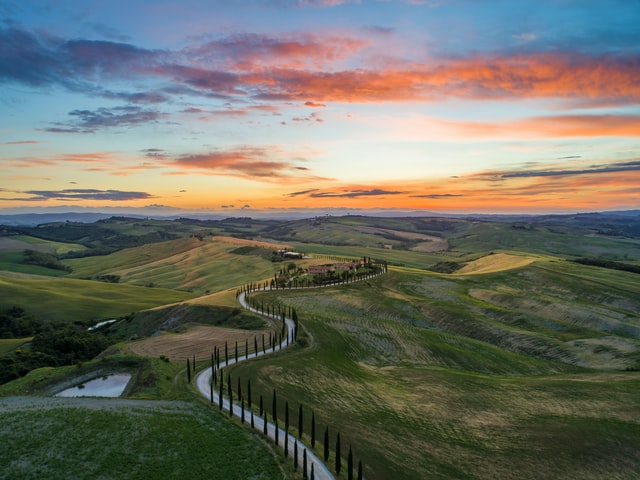
Prime vs Zoom lens FAQ
Are prime lenses better than zoom?
Prime lenses are better than zoom when it comes to image quality and minimum aperture value. However zoom lenses are more flexible and versatile.
Are zoom lenses sharp as prime?
Traditionally prime lenses are more sharp than zoom. However these days some zoom lenses are also equally sharp in a particular focal range within their entire focal range.
Are prime lenses worth it?
Yes they are definitely worth it and more. Prime lenses produce sharp images and are less bulky and light weight as well. Most prime lenses are also not very expensive.
Recommended prime and zoom lenses
Depending upon the camera bran you use you can select the appropriate lens but below are some recommendations.
Prime lens recommendations
- 24mm : Landscapes and wide angle shots
- 35mm : General purpose all round lens
- 50mm : General purpose and all round lens. Great portrait lens as well especially on a crop sensor camera.
- 85mm : General purpose and all round lens. Great portrait lens as well especially on a crop sensor camera.
- 100 mm : Mostly used for macro and portrait.
- 400mm : Bird and wildlife photography
- 600 mm : Bird photography
Zoom lens recommendations
- 10 – 22 : Landscape and architecture
- 16 – 35 : good all round lens for street and travel , landscapes.
- 24-70 : Great travel and all round lens.
- 70-200 : One of the best telephoto lens. Good for travel , portrait and sports.
- 100-400 : General purpose bird and wildlife photography lens.
Final Words
Both prime and zoom lenses have found their way into photographers minds for different situations and purposes. If you can plan your shoot , have time on your hand and are looking for uncompromising picture quality then go for prime lenses.
If you need more flexibility and want to capture quick snaps for various demanding situations then go for zoom lens.
Selecting a right lens for the purpose is more important than selecting a prime vs zoom.
